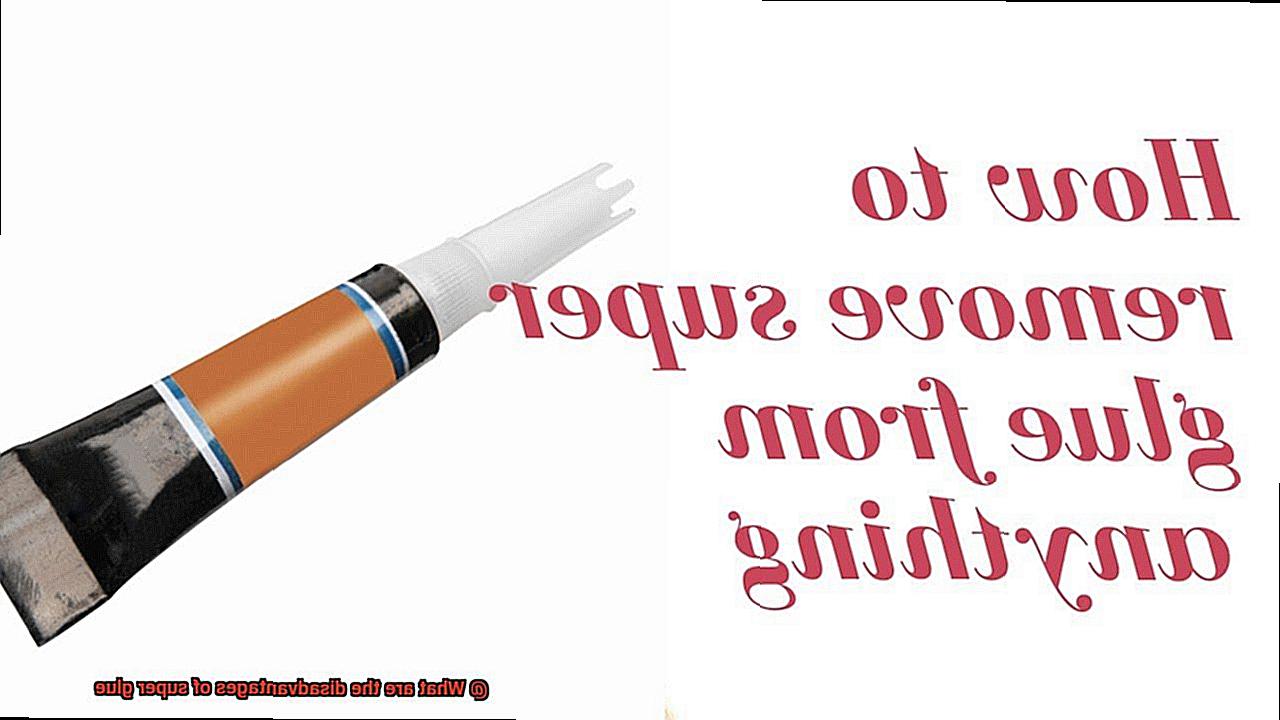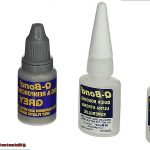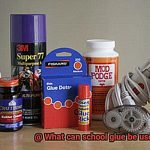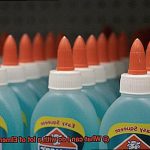You’ve got a project that needs some serious bonding power. That’s where super glue comes in handy, right?
It dries fast and holds tight, making it a go-to adhesive for many DIY enthusiasts. But before you start sticking things together like there’s no tomorrow, let’s talk about the not-so-great side of this popular adhesive.
In this blog post, we’re going to dive into the disadvantages of super glue and give you some tips on how to stay safe while using it. Because let’s face it, accidents happen, and we want you to be prepared.
So buckle up and get ready to discover the downsides of super glue – and how to avoid them like a pro.
Super Glue’s Strong Bond Can Be a Disadvantage
Contents
- 1 Super Glue’s Strong Bond Can Be a Disadvantage
- 2 Limited Flexibility of Super Glue
- 3 Short Shelf Life of Super Glue
- 4 Potential Health Hazards from Super Glue
- 5 Skin Irritation and Allergic Reactions from Super Glue
- 6 Incompatibility with Certain Materials
- 7 Limited Repositioning Ability of Super Glue
- 8 Expensiveness of Super Glue Compared to Other Adhesives on the Market
- 9 Conclusion
Super glue, also known as cyanoacrylate glue, is celebrated for its ability to create an unbreakable bond between various materials. However, this remarkable strength can sometimes be a double-edged sword.
In this article, we will delve into the potential disadvantages of super glue’s strong bond and explore how it can pose challenges in certain situations.
Lack of reversibility:
Once super glue sets and forms a bond, reversing or undoing it becomes an arduous task. This lack of reversibility can be particularly frustrating and inconvenient when working with delicate or expensive materials that require precision and care.
Imagine accidentally bonding the wrong pieces together or needing to disassemble a project for modifications – these scenarios highlight the irreversible nature of super glue’s bond.
Limited adjustability:
Super glue sets rapidly, leaving little time for adjustments or repositioning. This limitation can prove problematic when working on intricate projects that demand precise positioning or when trying to align and fit components accurately.
The inability to make last-minute alterations can cause frustration and compromise the outcome of a project.
Risk of skin contact:
Accidental skin contact with super glue can lead to fingers or other body parts getting stuck together, resulting in discomfort and potential injury when attempting to separate them. The strong bond of super glue makes accidental skin bonding a genuine hazard. It is crucial to exercise caution, wear protective gloves, and take appropriate safety measures to avoid such incidents.
Inflexibility:
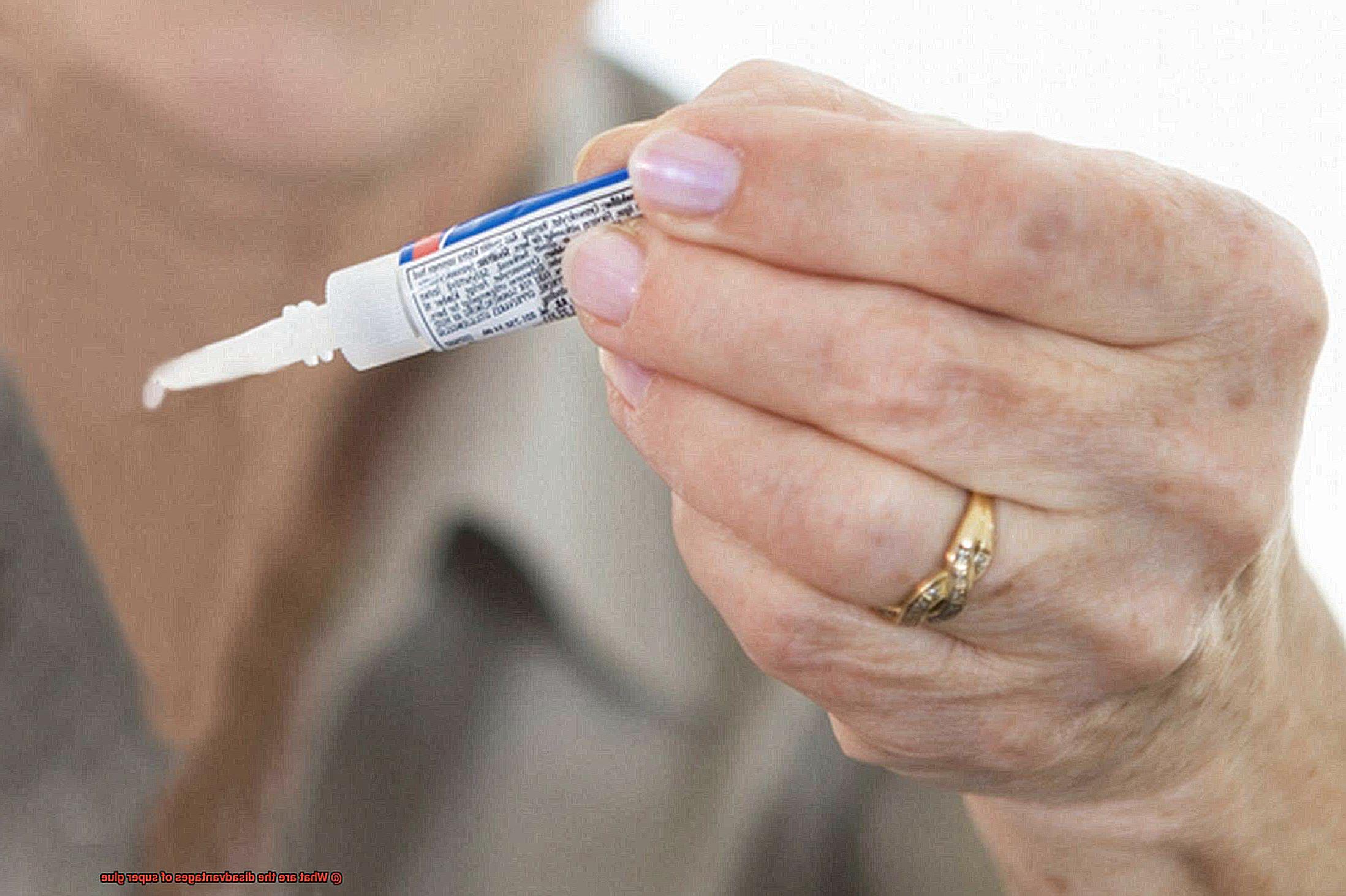
While super glue’s strength is commendable, its rigidity may not be suitable for applications requiring flexibility. Constant movement or vibration can strain the rigid bond created by super glue, potentially leading to failure over time. If flexibility is necessary, it is advisable to opt for adhesives specifically designed for flexible materials or applications.
Limited reusability:
Once a container of super glue is opened and exposed to air, it quickly hardens, rendering the remaining glue unusable. This limited reusability can be wasteful and costly, especially when the glue is needed for occasional use or in small quantities. To mitigate this issue, storing super glue in an airtight container or utilizing smaller, single-use packages can help prolong its shelf life.
Limited Flexibility of Super Glue
Super glue, also known as cyanoacrylate adhesive, is a remarkable bonding agent that can securely join materials like metal, plastic, and ceramics. However, it does have a flaw – its limited flexibility. This rigidity can pose challenges in various applications where movement, stress, temperature changes, and even removal are factors.
Imagine using super glue to fasten two parts of a hinge together. Initially, it may seem like a solid plan. But here’s the catch – super glue’s lack of flexibility would hinder the hinge’s movement, rendering it useless. It’s a frustrating setback.
Temperature changes can also wreak havoc on super glue. As materials expand or contract with fluctuations in heat or cold, super glue’s rigidity prevents it from flexing and accommodating these movements. The result? Cracks and breaks that turn a once sturdy bond into a weak link. This limitation makes super glue less than ideal for outdoor projects exposed to the elements.
Stress and vibrations are additional concerns. In situations where constant movement or mechanical stress is involved, super glue may not provide the durability and longevity you need. Think about automotive or aerospace applications – you need an adhesive that can withstand those demands.
Removing bonded objects can also be a headache with super glue’s limited flexibility. Breaking the bond without causing damage to the materials is no easy task due to its inflexibility. Talk about an oops moment.
Now, don’t despair just yet. There are modified versions of super glue available that claim to offer improved flexibility. These “flexible” or “rubberized” super glues may provide better performance in terms of flexibility compared to traditional ones. However, even with these variations, they still have their limitations when compared to other types of adhesives like epoxy or silicone-based ones.
Short Shelf Life of Super Glue
Super glue is renowned for its Herculean bonding strength, capable of adhering almost anything. However, its effectiveness seems to dwindle at an alarming rate. So, what causes this rapid decline? Let’s delve into the fascinating world of super glue.
Upon cracking open a fresh bottle of super glue, the countdown begins. Unlike other adhesives, super glue undergoes a chemical reaction with moisture in the air to form its bond. As air seeps into the bottle, the glue starts to cure and solidify, rendering it less usable.
But here’s the kicker – the shelf life of super glue varies depending on the brand and formulation. On average, an unopened bottle can last around a year. Yet, once uncapped, the adhesive can deteriorate within weeks or months. It’s like a ticking time bomb.
Temperature and humidity also play a significant role in the demise of our beloved super glue. Higher temperatures speed up the curing process, causing the glue to harden more rapidly. If you reside in a swampy region or have a humid basement, your glue may absorb moisture from the air, leading to premature curing.
To combat this enemy of longevity, proper storage is paramount. Keep your super glue in a cool, dry place away from direct sunlight and extreme temperatures. Some dedicated DIYers even resort to storing their bottles in the fridge to slow down the curing process and extend usability. Now that’s dedication.
Remember to always check the expiration date before using your super glue. Using old or ineffective adhesive can result in weaker bonds or failed adhesion – a recipe for frustration and disappointment.
To make the most of your super glue stash, consider purchasing smaller quantities that can be used within a reasonable timeframe. This way, you won’t waste adhesive due to premature hardening or deterioration.
Potential Health Hazards from Super Glue
Well, before you dive into your next project, it’s essential to be aware of the potential health hazards lurking behind this seemingly harmless adhesive. Super glue may seem like a handy tool, but it’s important to understand the risks it can pose to our health. So, let’s peel back the layers and uncover the truth about potential health hazards from super glue.

Skin Irritation and Allergic Reactions:
Did you know that super glue contains a chemical called cyanoacrylate? This powerful adhesive can cause skin irritation and allergic reactions in some individuals. For those with sensitive skin or allergies, applying super glue can lead to redness, itching, and even painful blisters. It’s crucial to be cautious and protect your skin when working with this adhesive superhero.
Respiratory Issues:
Inhaling the fumes of super glue can be harmful to our respiratory system. These fumes contain volatile organic compounds (VOCs) that can irritate our airways, causing symptoms like coughing, wheezing, and shortness of breath. Prolonged exposure to these fumes can even result in more severe respiratory problems. So, remember to open windows or work in a well-ventilated area to minimize any potential harm to your lungs.
Accidental Ingestion:
Oops. Accidentally swallowing even a small amount of super glue can be dangerous, especially for children. When ingested, super glue can cause throat irritation and difficulty swallowing. In some cases, it may even create a blockage in the digestive tract, requiring immediate medical attention. To avoid any sticky situations, keep super glue out of reach of children and store it safely.
Wound Healing Delays and Infections:
Here’s a friendly reminder: super glue is not meant to be used on open wounds or broken skin. Applying it directly onto such areas can delay the healing process and increase the risk of infection. Always remember to clean the wound thoroughly before applying any adhesive to ensure a safer healing journey.
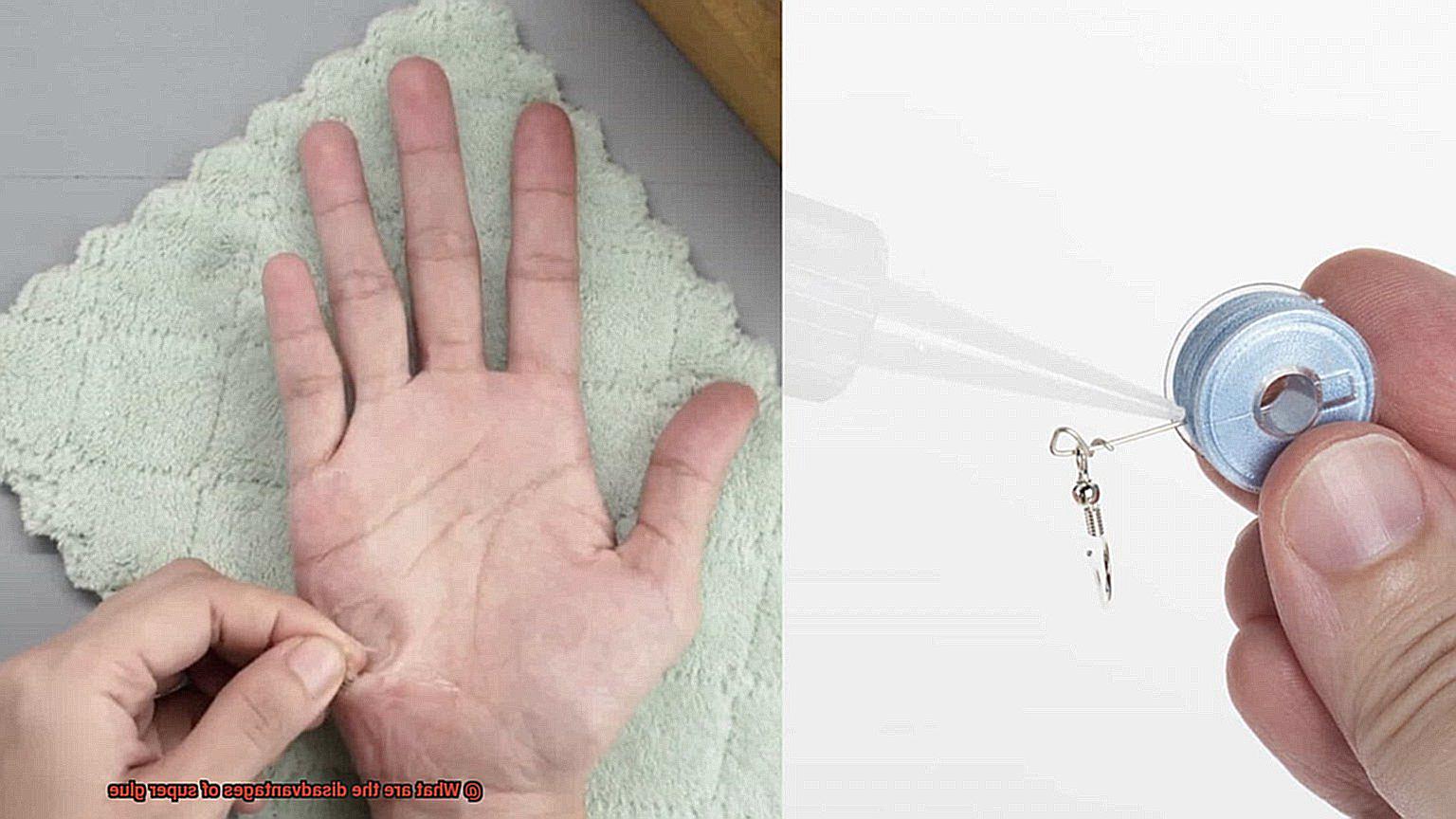
Eye Injuries:
Keep your eyes wide open when handling super glue. If this adhesive superhero accidentally comes into contact with your eyes, it can cause irritation, redness, and even damage to the cornea.
Immediate flushing of the eyes with water is crucial to minimize any potential damage and prevent long-lasting consequences.
Conclusion:
While super glue may have impressive bonding power, it’s important to recognize the potential health hazards it can bring. Take necessary precautions like working in a well-ventilated area, wearing gloves to protect your skin, and storing it safely out of reach of children.
By being cautious and informed, you can enjoy the benefits of super glue without any sticky health issues. Stay safe and glue on.
Skin Irritation and Allergic Reactions from Super Glue
Super glue, the adhesive superhero we all love, comes with a not-so-pleasant side effect: skin irritation and allergic reactions. But fear not, my fellow crafters, for I am here to guide you through the ins and outs of this sticky situation.
Let’s start with the basics. Super glue contains a chemical called cyanoacrylate, which can irritate your delicate skin. Imagine unwelcome guests crashing your skin party: redness, itching, and a burning sensation. And just when you thought it couldn’t get worse, blisters may join the party too.
But hold your horses. Not everyone will have this unfortunate experience. Some people are more sensitive to these chemicals, while others seem to be immune to their irritating effects. It’s like playing genetic roulette with your skin.
Now, let’s talk about the real MVPs: allergic reactions. Although less common, they can be more severe. Picture this: swollen skin, hives popping up like confetti, difficulty breathing, and in rare cases, anaphylaxis gatecrashing the party uninvited. Yikes.
Prevention is key to avoiding this sticky situation altogether. First off, try your best not to get super glue on your precious skin. But accidents happen. If you find yourself in a sticky situation (pun intended), wash the affected area immediately with soap and water. And if things go south and you experience any skin irritation or an allergic reaction, seek medical attention without hesitation. Your friendly neighborhood healthcare professional will guide you through the appropriate treatment options.
- Here’s a fun fact for you: frequent use of super glue can actually develop into a sensitivity or allergy over time. So even if you fancy yourself a super glue aficionado, keep an eye out for unexpected reactions. Your skin might throw a curveball at you.
- Lastly, remember the golden rule: never use super glue on open wounds or broken skin. It not only delays healing but also increases the risk of infection. Double trouble.
Incompatibility with Certain Materials
Super glue, the superhero of adhesives, with its lightning-fast drying time and Herculean bonding strength, seems invincible. However, there is a hidden Achilles’ heel – not all materials are compatible with this adhesive marvel. In this article, we will embark on a fascinating journey to unravel why super glue may falter when faced with certain materials. Brace yourself for insights that will empower you to achieve flawless adhesion results.

Low Surface Energy Plastics:
Polyethylene (PE) and polypropylene (PP), the low surface energy plastics, possess an elusive quality that defies super glue’s charm. Their slick surfaces resist the adhesive’s attempts to establish a firm bond, resulting in frustrating peeling and breakage. Fear not. Specialized adhesives engineered explicitly for low surface energy plastics come to the rescue, ensuring unyielding bonds.
Silicone Surfaces:
Silicone, synonymous with smoothness and non-porosity, presents a formidable challenge to super glue’s adhesive prowess. Its flexible nature further complicates matters by undermining the bond’s durability over time. Nevertheless, salvation is within reach. Adhesives specially formulated for silicone or primers designed to prepare its surface can fortify the bond and render it impervious.
Oily or Greasy Surfaces:
The oily or greasy surfaces that thwart super glue’s bonding ambitions contain invisible barriers that defy its advances. To triumph over these formidable foes, meticulous surface cleansing is essential. Purge the surfaces of any trace of oil or grease, paving the way for a robust and unbreakable connection.
Metals with Oxide Layers:
Certain metals, like brass and copper, don a cloak of oxide layers that repel super glue’s affections. Conquering this challenge requires innovative strategies. Roughening the metal surface or employing specialized primers tailored to metal bonding can unleash the adhesive’s full potential, creating an unbreakable union.
Fabrics with Delicate Fibers:
When it comes to bonding fabrics with delicate fibers or loose weaves, super glue might not be the best suitor. Its immense strength can overpower these fragile materials, leading to irreparable damage. A prudent approach involves a cautious courtship – testing a small, inconspicuous area before committing to a lasting bond.

Other Incompatible Materials:
The incompatibility saga does not end here. Glass, ceramics, and select wood species also possess idiosyncrasies that demand specialized adhesives tailored to their unique properties. Conquering these materials’ bonding challenges requires selecting adhesives crafted to navigate their intricate surfaces.
Limited Repositioning Ability of Super Glue
The limited repositioning ability of super glue is like a sticky situation that can leave you feeling trapped. Super glue, the superhero of adhesives, with its lightning-fast drying time and Herculean bonding strength, has saved the day in countless DIY projects and repairs. However, even superheroes have their weaknesses, and for super glue, it’s the inability to easily readjust or reposition once applied.
The reason behind this lack of flexibility lies in the speedy bonding process of super glue. As soon as it comes into contact with moisture in the air, it sets rapidly, leaving you little time to tweak or align your project just right. It’s as if you’re trying to move a boulder that has settled into place – nearly impossible.
But fear not. There are strategies to overcome this sticky situation and ensure your project turns out perfectly. Let’s explore some tips to help you navigate the limited repositioning ability of super glue:
- Use a thin layer: Applying a thin layer of super glue reduces the chances of misalignment and gives you a bit more wiggle room before it sets. It’s like treading lightly on thin ice – delicate yet calculated.
- Hold it steady: Utilize tools such as tweezers or clamps to hold your objects in place until the bond sets. This will help maintain alignment and prevent any unwanted shifts. Think of it as creating a fortress around your project, ensuring its stability.
- The magic of acetone: If you need to make minor adjustments after applying super glue, a small amount of acetone or nail polish remover can temporarily weaken the bond. It’s like a secret potion that unlocks possibilities. However, be cautious, as acetone may damage certain materials.
- Consider alternatives: If frequent repositioning is necessary for your project, it might be worth exploring alternative adhesives that offer greater flexibility in terms of repositioning and readjustment. It’s like opening a treasure chest of options to find the perfect adhesive for your needs.
Remember, while super glue may have its limitations, it’s still a superhero in the adhesive world. Its fast bonding and incredible strength make it a popular choice for various applications. Just keep in mind the need for precision and careful planning to ensure successful bonding and alignment of your objects.
Expensiveness of Super Glue Compared to Other Adhesives on the Market
In the realm of adhesives, a battle is waged for the title of the most expensive contender. And in this fierce competition, Super Glue emerges as the reigning champion. But fear not, my fellow glue enthusiasts, for there are valid reasons behind its lofty price tag. Let’s delve into what sets Super Glue apart from its adhesive counterparts and justifies its higher cost.
First and foremost, Super Glue possesses an unrivaled strength that renders it the go-to choice for a myriad of applications. Its powerful bonding capability is achieved through a unique formulation that necessitates specific ingredients, driving up production costs.
But that’s not all. Super Glue’s rapid-drying nature adds to its expensiveness. While other adhesives leisurely take their sweet time to set, Super Glue dries in a flash. This quickness allows for faster project completion; however, it demands precise application since once it adheres, there’s no turning back. The technology behind this lightning-fast drying time amplifies production costs, hence the steeper price point.
But before you dismiss Super Glue as too extravagant for your budget, let’s explore its cost-effectiveness. Although the initial investment may seem daunting, rest assured that only a small amount of Super Glue is needed to achieve remarkable results. This means that a single bottle can last through multiple projects, making it a wise long-term investment.
Moreover, Super Glue’s superior performance may well justify its higher price. It fearlessly withstands heat, water, and various chemicals with ease, making it ideal for demanding applications where other adhesives might falter. When strength and durability are paramount, splurging on Super Glue becomes a rational choice.
Of course, we mustn’t overlook the alternatives. While white glue and epoxy offer generally more affordable options, they may not match Super Glue’s exceptional toughness and resilience.
So, when selecting the perfect adhesive for your project, take into account your budget, specific requirements, and desired outcomes. Super Glue may be a tad pricier upfront, but its unrivaled strength, efficiency, and longevity might just make it the hero you need.
1hY1jyGNzIo” >
Also Read: How do you remove super glue residue from rubber?
Conclusion
In conclusion, it is important to recognize the disadvantages of super glue. Firstly, one major drawback is its permanence. Once super glue bonds two surfaces together, it becomes extremely difficult to separate them without causing damage. This lack of reversibility can be frustrating and limit flexibility in certain situations.
Additionally, super glue can be hazardous if not used properly. The strong adhesive properties can cause skin irritation or even burns if it comes into contact with the skin. It is essential to handle super glue with caution and wear protective gloves when working with it.
Another disadvantage is that super glue may not work well on certain materials. It tends to adhere best to non-porous surfaces like glass or metal, but may struggle to bond effectively on porous materials such as wood or fabric. This limitation can restrict its usefulness in various DIY projects or repairs.
Furthermore, the quick drying time of super glue can be both a blessing and a curse. While it allows for immediate bonding, it leaves little room for error or adjustment once applied. This lack of maneuverability can be problematic when trying to align objects precisely or make adjustments during the bonding process.
Lastly, super glue has a relatively short shelf life once opened. Over time, exposure to air causes the glue to harden and become less effective. This means that if you don’t use it frequently enough, you may find yourself needing to purchase new tubes more often than desired.
In conclusion, while super glue offers many benefits in terms of its strength and fast-drying properties, it also carries several disadvantages that should be considered before use.

